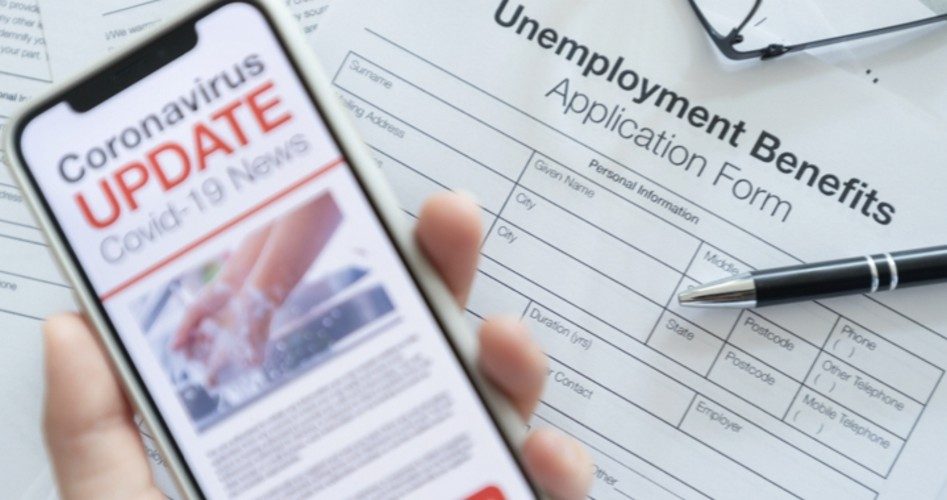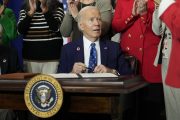
Initial unemployment claims declined 7 percent — from the previous week’s figure of 1.413 million — to 1.314 million for the week ending July 4, meaning the Department of Labor’s total unemployment claims since March 1 is more than 50 million — 15.2 percent of the American population.
Yet the unemployment rate for the week ending June 27 dropped slightly to 12.4 percent.
The continued unemployment-rate declines mean the economy is recovering, albeit slowly, from the crushing blow the coronavirus and the ensuing lockdowns delivered beginning in March when the surge of unemployment claims began.
The question: Will the economy, combined with the Black Lives Matters riots, give Democrat presidential candidate Joe Biden a victory in November.
The Details
As of the week ending July 4, the department reported, 50.46 million Americans had filed for unemployment since March 1, when a tsunami of claims surged to 6.867 million in the two weeks between March 7 and March 28.
Claims jumped a mind-boggling 3,154 percent.
Since then, they’ve steadily dropped, and now are about 20 percent of what they were when they peaked after the Pandemic Panic that walloped a thriving jobs market and surging stock market.
Initial Unemployment Claims by Week
March 7 — 211
March 14 — 282
March 21 — 3,307
March 28 — 6,867
April 4 — 6,615
April 11 — 5,237
April 18 — 4,442
April 25 — 3,846
May 2 — 3,176
May 9 — 2,687
May 16 — 2,446
May 23 — 2,126
May 30 — 1,897
June 6 — 1,566
June 13 — 1,540
June 20 — 1,482
June 27 — 1,413
July 4 — 1,314
Total: 50.46 million
Across the States
For the week ending June 20, Michigan and Indiana reported the largest increase in initial claims from the previous week by far, with Texas, Virginia, and Kentucky as also-rans.
Oklahoma enjoyed the largest decrease in new initial claims by far, followed by Florida, Maryland, Georgia, and California.
Total unemployed for the week ending June 27, was about 18 million, a drop of 698,000 from the previous week’s 18.76 million.
Unemployment for the week was 12.4 percent, yet another decline from the previous week’s 12.9 percent.
The states with the highest unemployment rates for the week ending June 20 did not change, but all except but three — Puerto Rico, California, and Louisiana — enjoyed an unemployment-rate decrease.
States with the highest unemployment rates included Puerto Rico, 25.4 percent; Nevada, 20.8 percent; Hawaii, 20.7; The Virgin Islands, 17.5; New York, 17.1; California, 16.7; Louisiana, 16.2; Massachusetts, 15.6; Georgia, 15.1; and Connecticut, 15.
Biden’s Lead Unchanged
Whether those numbers help Joe Biden, the Democrat presidential nominee, remains to be seen. Biden’s lead on Trump in the Real Clear Politics polling average has not improved since last week and remains at 8.8 points. Biden leads in five key battleground states: Arizona, Florida, North Carolina, Pennsylvania, and Wisconsin. RCP predicts a 222-125 Biden victory in the electoral college.
Yet the polls shouldn’t be taken at face value since voters often vote with the economy, yet Biden led Trump in the polls even as the economy peaked in February before the coronavirus and ensuing lockdowns blew a hole in it.
For instance, the market reached a record high on February 12 of 29,551.42, yet Biden still defeated Trump in every poll during that time except one: an Emerson survey that put Trump 4.4 points ahead.
The Dow Jones Industrial dipped below 20,000, but now has recovered more than half the 10,000 points it lost during the panic. It sits at about 26,000. That’s just 12 percent below the February peak.
As well, Biden was ahead in the polls when the unemployment rate was hovering around a very low 3.6 percent for more than a year and was the lowest in more than half a century, well before the unemployment rate exceeded 14.7 percent in April.
Now, total unemployment claims and the jobless rate are dropping steadily.
In other words, no matter what Trump does, no matter how the economy performs, nothing changes: Biden stays ahead in the polls.
Thus, what happens in the streets might well determine the election. Arson, looting, attacks on cops, and toppling statues aren’t likely help Biden, as a recent Trump campaign advertisement shows: “You won’t be safe in Joe Biden’s America.”
Biden’s 8.8-point lead today is no guarantee of victory, warned failed Democrat candidate Michael Dukakis, also clobbered with a law-and-order campaign ad from opponent George H.W. Bush. “Particularly this year, [polls] should be studied cautiously,” Dukakis told the Boston Globe. “Biden can and should win, but being at 50, no matter how weak your opponent is, is no guarantee of success.”
In July 1988, a Newsweek-Gallup poll gave Dukaki a whopping 17-point lead, 55-38, over Bush. But Bush crushed him 426-111 in the Electoral College. Dukakis won just 10 states, plus Washington, D.C. and 45.6 percent of the popular vote.
Photo: courtneyk / iStock / Getty Images Plus



